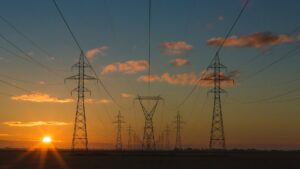A popular quotation amongst my fellow consultants, and has featured previously in this blog is the following gem from George Box:
“All models are wrong, some models are useful”
It’s now almost become a cliché, having been over-used especially by me. None the less, it’s a pithy expression that reminds us to treat our models with appropriate caution; it’s important to understand in exactly what ways our models are wrong, in order for them to be useful. A closely related expression is ‘rubbish in; rubbish out’ or a less polite variant should the mood take you. In this blog I will delve (not even very deeply) into a particular class of rubbish that might go into a model: material properties.
Thermal conductivity is a parameter that should be familiar to all designers, especially those involved with energy-efficient buildings (which is everyone).
Usually, the first thing to know is how good your insulation is. It is also often important to know the conductivity of materials bridging your insulation, but let us focus on insulation for now. There are several test methods and standards for establishing the thermal conductivity of different building materials and components. These generally involve holding one side of a sample at a different temperature to the other, and measuring the energy required to maintain that differential, or some other physical variable from which the resistance to thermal conduction can be inferred.
For the last 18 years or so, products sold in the UK must comply with the EU Construction Products Directive, part of which is that the ‘declared thermal conductivity’ (i.e. the number written in the product data sheet) must be checked by testing a number of samples, and those samples must achieve a certain consistency. The consistency is defined in a measure called lambda 90/90. This means the lambda (the Greek letter commonly used to represent conductivity) of 90% of the samples must be within 90% of the declared value. This seems like not a very high statistical bar in the context of the tolerances achieved with modern manufacturing techniques, but none the less this is the requirement.
So in theory, some of the insulation installed in a particular building could have a slightly worse conductivity than quoted on the tin, but the above definition means we can be reasonably confident that it’s unlikely we’ll get a dud batch that will significantly undermine the performance of our building. It is impractical to measure the actual conductivity of every piece of insulation before it is installed in a building, and even the Passivhaus Institute stop short of this level of rigor. It is also worth pointing out that this approach incentivises manufacturers to be as consistent as possible in their output; the lambda 90/90 method means that bad batches will have a disproportionate impact on the declared conductivity, which is bad for business in a game where this one number is so important. In this context of very consistent product, we should be more concerned with other factors that impair performance such as sloppy installation leading to thermal bypass, or damp material having higher conductivity. So for practical purposes we can take the lambda 90/90 value as a robust way to specify insulation.
The thermal conductivity of insulation materials is also dependent, to some extent on the temperature of the material and its moisture content.
Temperature dependency for most insulation materials is in the order of 0.002 W/mK2, meaning that for a one-degree increase in temperature, the conductivity will increase by a very tiny amount. In the depths of a UK winter for example, a slab of mineral wool with a declared conductivity of 0.034 W/m.K at 0°C on the outside and 20°C on the inside will have a conductivity of 0.032 at the outside surface and 0.036 at the internal surface. Although this could be significant, test standards require declared conductivities to be based on tests at 10°C, and the majority of heating will happen when it’s below 10°C outside.
Intuitively, it is obvious that wet insulation doesn’t work as well as dry insulation. Anyone who’s been caught up a mountain with a leaky jacket will find this particularly intuitive. The impact varies from material to material, and also importantly, some materials are much more able to store water then release it again without long-term detriment – a useful property we often take advantage of when specifying internal wall insulation.
For example, a piece of mineral wool containing its own weight as water (this would be far from saturated) will have a conductivity around 5% higher than if it was completely dry, but when saturated might be ten or twenty times worse. Most materials in a well designed and maintained building should remain relatively dry. One example where this is sometimes not the case is in blockwork courses below the DPC. A common detail is to use AAC in the lower courses of the inner leaf of a cavity wall, to mitigate thermal bridging. If this AAC is below the DPC, it is likely to take up some moisture, increasing its conductivity and increasing the thermal bridging. Some products are designed to minimise this effect, and careful detailing can also reduce this problem. Returning to the example of IWI, there are several insulating plasters on the market now, some of which claim impressively low thermal conductivities – when bone dry. However, the nature of these materials and their typical applications is such that they will not be bone dry in use – maybe not very wet, but certainly enough to make the declared conductivity less impressive. These are still, for some situations, excellent products, but it’s important to be aware of all the implications.
All this is important to bear in mind whenever we calculate U-values, simulate thermal bridges, and specify insulation. That innocent-looking thermal conductivity value is a little more complicated than first meets the eye, but armed with an understanding of the limitations, meanings and implications, we can navigate this terrain and deliver good quality, high performance buildings.





